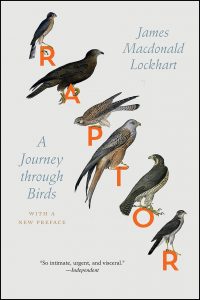Raptor at Kirkus Reviews

James Macdonald Lockhart’s Raptor: A Journey through Birds was recently covered by Kirkus Reviews; their review follows in full, below.
***
When William MacGillivray (1796-1852) published his History of British Birds in 1845, a fellow ornithologist was lavish with praise: “There is a peculiar mountain freshness about Mr. MacGillivray’s writings, combined with fidelity and truths in delineation, rarely possessed by Naturalists, and hitherto not surpassed.” Literary agent Lockhart’s elegant, engrossing literary debut deserves equal acclaim. Buoyed by MacGillivray’s journals and books, particularly his first, on rapacious birds, Lockhart evokes in precise, vibrant detail every aspect of the fascinating predators and their habitats. Although their behaviors vary, all raptors share startlingly acute vision. Humans have about 200,000 photoreceptor cells; birds, 1 million. Like binoculars, their eyes magnify images by around 30 percent. “Birds of prey,” writes the author, “see the whole twitching world in infinite, immaculate detail.” And their world is vast. Ospreys, for example, spend winters in the mangrove swamps of West Africa, flying thousands of miles across the Sahara to arrive in Britain to breed. Peregrine falcons, “specialist” predators that prefer “medium-sized avian prey,” return to the same nest sites each year, guided by droppings left from the previous year’s young. In the mid-1950s, agricultural pesticides reduced the supply of calcium carbonate in the peregrine’s tissues, leading to thin, fragile eggshells; thankfully, a ban on the pesticide reversed the plummeting population. As their numbers increased, some relocated, bringing wildness into cities. Lockhart admires the power of the soaring golden eagle; the devious pursuit of sea eagles, who badger other birds to make them “spill their catch”; and the mesmerizing aerial acrobatics of the red kite, which “can suddenly turn on a sixpence.” The author admires the determined, prickly MacGillivray, as well, now forgotten in favor of his collaborator and friend James John Audubon. They formed, Lockhart writes, “an ornithological dream team.”
This illuminating book serves as homage to a brilliant naturalist and extraordinary birds. If you loved H Is for Hawk, put this next on your reading list.
***
To read more about Raptor, click here.